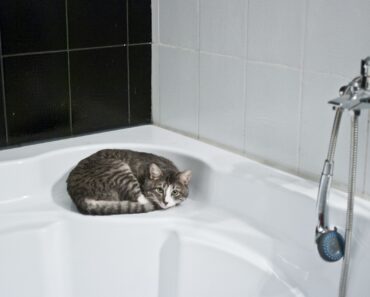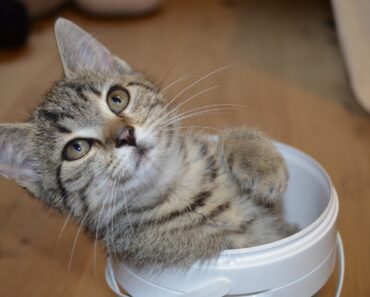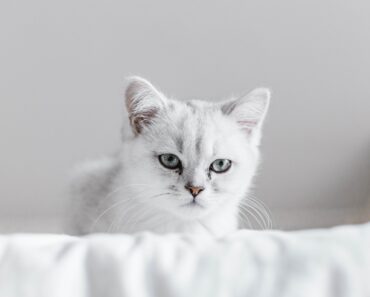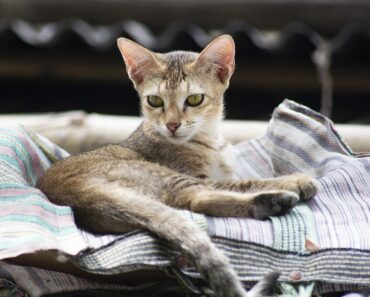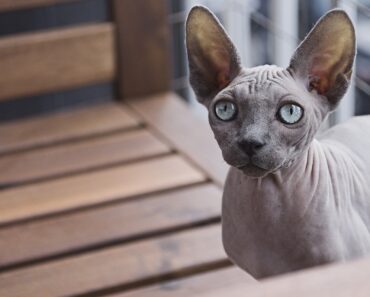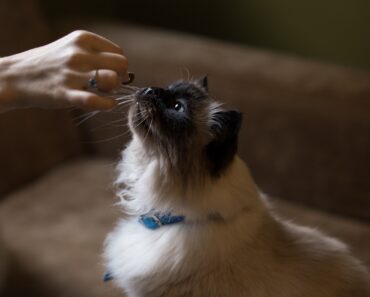Owners of short-haired pets often overlook such an important grooming procedure as brushing, thinking that it is only necessary for long-haired and very hairy breeds. In fact, regular brushing is important not only from an aesthetic and practical standpoint but also from a medical standpoint. Below you’ll find out why and how you should brush your cat depending on the length of its hair.
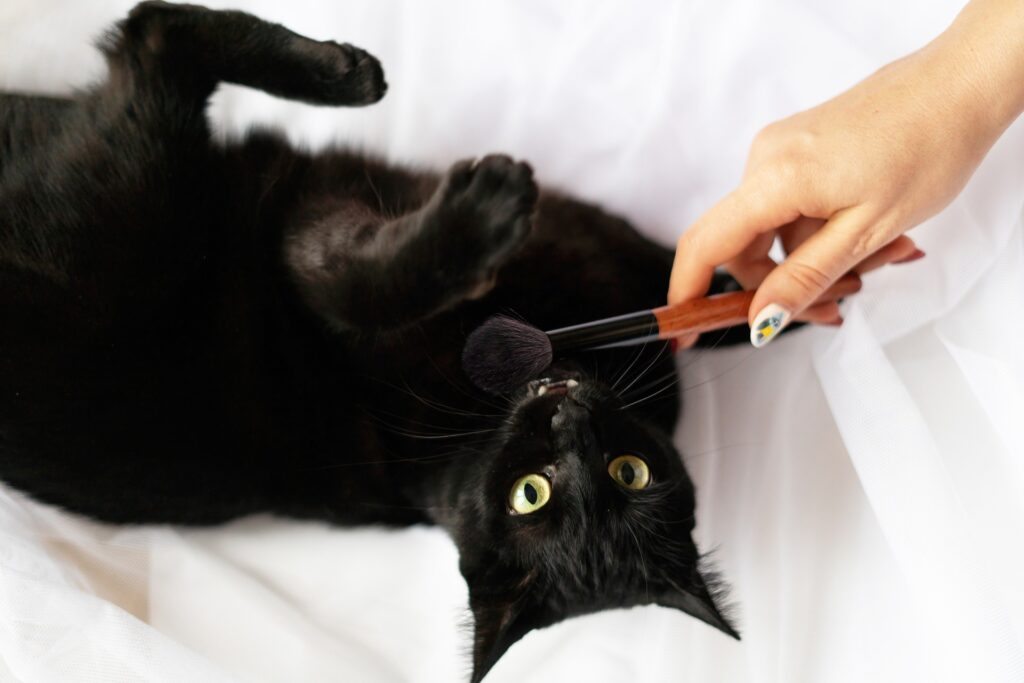
Should a cat be brushed – and why?
There are many benefits to combing a cat’s hair. These include:
- Reducing the amount of lint flying around the house. Most loose hair tends to build up inside the undercoat, so removing it in time makes shedding (especially if it’s permanent) less likely.
- Improve your pet’s appearance. Regular brushing prevents matting and massaging the skin stimulates circulation and has a positive impact on the quality of the new coat.
- Prevent intestinal obstruction and vomiting. Hair that has adhered to the tongue during licking turns into dense hair balls, or bezoars, inside the body. Smaller hairballs are usually regurgitated by the cat, while larger hairballs can block the exit of fecal matter.
Preventing dermatitis and infections. Tangles are one of the leading causes of skin problems and microbial contamination. Clumped hair impedes natural ventilation and leads to fouling.
This means that not only long-haired animals must be combed, but also all other animals that have long hair. Only bald breeds can go without a comb, provided they don’t have a lot of down and curly hair.
What tools will be needed
First of all, you need to familiarize yourself with the most common grooming tools. They should be chosen according to the length and structure of the coat and the purpose for which they are intended.
Hair comb or brush
These tools are designed to be gentle on the surface, that is, on the hair shaft. They can be used not only to get rid of loose hair, but also to get rid of vermin.
Furminator
Shaped like a razor and composed of metal blades with rounded teeth, it prevents tangles and shortens seasonal shedding.
Mitt.
It is a silicone or rubber glove. Suitable for the superficial cleaning of dry or wet coats. The use of the glove is accompanied by a pleasant massage for the animal. It should be used at the end of the treatment or during the wash as it cannot detangle stuck hair.
Fluffer
A fluff brush, or slicker, has rounded metal teeth and helps get rid of lint. It can only be used on lint-free coats that have been combed through.
Brushes.
This group includes double-sided brushes. One side has natural bristles that are suitable for massaging, and the other side has rounded metal teeth that remove dead hair. Synthetic ones are also available, but they can electrify your cat’s coat and cause discomfort.
Paper Scraper
The purpose of this tool is clear from its name. It is used to remove hair that cannot be removed by hand. Properly applied, it creates incisions that make it easier to remove lint, but it does not cut the entire coat.
How to properly brush a shorthaired cat
First, let’s find out how to brush a shorthair cat. Shorthairs are easier to care for than longhairs, but there are still some rules to follow.
Choosing the right tools
The most important points to pay attention to are the frequency and length of the teeth. For short-haired breeds, frequent use of combs and fine combs is necessary.
When choosing a hair trimmer, look for horizontal models. They are suitable not only for owners with short hair but also for medium-length hair.
A 3-step procedure
First, examine your pet carefully to make sure it is not tangled. If you find any tangles, try to untangle them with your hands or remove them with a paper cutter. Next, proceed with the basic steps:
- Start with a comb. Dampen it to prevent hair fibers from flying around the room and comb it all over the body, from head to tail, in the direction of hair growth. You can also use a short-toothed Furminator instead of a comb.
- Repeat the previous action, changing the direction. The coat should now be combed against its growth. This will remove more hair.
- Finish the procedure by massaging it with a mitt. On average, all of the above steps take about 10 minutes.
Act confidently, but gently. Don’t apply too much pressure on the comb and mitt to avoid hurting your pet. When you are finished, don’t forget to give your pet a treat and praise him.
Moisten your hand while combing and run it over the cat. Combing can be completed shortly after the hair has stopped clinging to the wet skin.
How to brush a long-haired cat
Long-haired breeds require a little more work. It takes at least 15 minutes to comb them. It depends mostly on your dexterity and your cat’s behavior.
What tools should I choose?
Owners of long coats need a long-toothed sparse comb, a vertical tool for cutting cords, a lint brush, a mitt and a feather duster. The latter is needed to comb the “pants”, the “collar” and the fluffy “feathers” of the tail.
A 3-step procedure
Preparation is important here too, do not proceed to combing until you have dealt with the detected knots. After that, use the following algorithm:
- Comb the coat with a comb in the direction of hair growth. Avoid backcombing. This is traumatic for long-haired breeds.
- Take a lint brush and repeat the previous step. If your pet is shedding, use a wool comb immediately after.
- Finish with a massage using the mittens.
Pay special attention to the pant legs and collar. They can be combed comfortably while lying down or standing, so ask your roommates to help. Remember that these areas are prone to tangles and brush them as gently as possible.
Frequency of treatment
The recommended frequency depends on the length of the hair. Short-haired cats are brushed once a week and long-haired cats 3-4 times a week. During the moulting period, the frequency should be increased to 2-3 times a week and 1 time a day respectively.
Should a cat be bathed before or after
Cats are very clean animals and frequent washing is therefore contraindicated. A comb as a grooming measure should do the trick.
Dermatologists recommend looking for external contamination. If an animal is walking around and gets dirty, it should of course be bathed. The same is true for force majeure situations when a curious kitten digs in a flower pot or smears sour cream on itself when it is unsupervised.
Ideally, washing frequency should not exceed once a month. More frequent washing can damage the skin’s protective layer, causing dryness and irritation. An exception can be made only before a show. In other cases, it is best to use wet pet wipes or dry shampoo.
Contraindications
Even a procedure as harmless as scraping has its contraindications. These include:
- Multiple entanglements;
- Any skin lesion;
- Dermatitis and allergies.
In case of wounds or eczema, combing should be postponed until complete healing. Otherwise, the problem will worsen and the cat will develop an aversion to all the tools used because of the pain they cause.
What if the cat won’t let go?
If a cat tries to escape, screaming and showing its displeasure, look for the major errors:
- Pressure. Don’t restrain it by immobilizing it, don’t yell at it, and don’t use violence. These things don’t work and exacerbate existing fear.
- Lack of preparation. Cats focus on their sense of smell as they become familiar with new objects. Let him sniff tools and touch them with his paw to make sure they are safe.
- Fussiness. Try to brush your pet at the same time, after work for example. Pets have a biological clock that works, so this regularity will quickly become a habit.
- Work in a hurry. Don’t try to speed up combing by grabbing large areas of hair. It’s painful and unpleasant.
- Lack of encouragement. Positive reinforcement is always effective. So be sure to hand out a treat when you’re done.
- Being cornered or placed on a slippery table. A good place for grooming is a windowsill. There is plenty of light, you are at a comfortable height and your pet can be distracted by looking out the window.
The best time for grooming is the first molt. It starts 6 months after birth.
Specialties of combing the different breeds of cats
In addition to the length of the hair, there are a few other things to consider: the way the hair is combed and the density of the undercoat.
Scottish
This breed has a wool that extends over both sides of the body like a mole coat. For this reason, Scottish cats can be brushed both in the direction of its growth and against it. As mentioned above, it is possible to do the same with shorthair breeds, but with the major problem of getting the cat to agree. This is not always possible, as brushing is unpleasant, but not as traumatic as with longhairs.
The main difference between the Scots is that they don’t care. They don’t feel any discomfort and accept this handling easily.
British cats and other cats with thick undercoats
Short-haired Brits are another exception to the rule. Combs and brushes with short, fine teeth damage their undercoat, which is too thick for these tools. They also make their coats look smooth and less fluffy.
“Les Britons et les autres races ayant un sous-poil épais ne doivent jamais être brossés contre le pelage. Cela peut entraîner l’apparition de plaques de chauve-souris.
Races sans sous-poil
Ce groupe comprend les chats sans poils et les races des pays chauds : siamois, thaïlandais, orientaux, balinais, birmans et singapouriens. Les premiers ne sont généralement pas peignés mais massés à l’aide d’une mitaine ou d’une brosse spéciale pendant le lavage, tandis que les seconds sont peignés à l’aide d’un peigne et d’une mitaine peu fréquents.
Un peigne à dents courtes peut également être acheté pour les sphinx bringés. Avec l’arrivée de l’hiver, leur pelage clairsemé devient plus épais, il faut donc le peigner environ une fois par semaine.
Conclusion
Brushing a cat is a very important and certainly useful procedure that should not be ignored. If you are unsure, watch the training videos or ask the groomer to show you the basic steps. Many grooming salons appreciate having an owner present with the pet, as it greatly reduces stress.
This article is just a recommendation!

